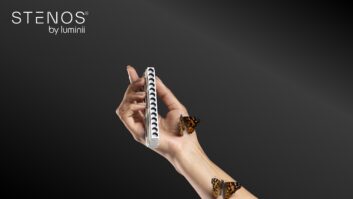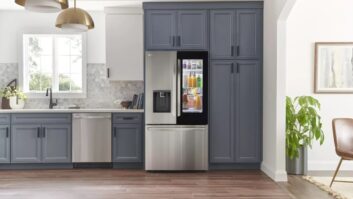Sometimes looking ahead requires some looking back.
It was in 2002 that the cable and consumer electronics industries began the sometimes painful and always arduous quest to blend their products. In development, and in keeping with the voluntary plug-and-play standard presented by both industries to the Federal Communications Commission, were “UDCPs,” or “Unidirectional Digital Cable Products.”
For the most part, UDCPs took the form of one-way high definition televisions with built-in CableCARD slots. When mated with a CableCARD, consumers could receive and display all cable channels, including premiums, without a set-top box.
By 2003, three one-way HDTVs with CableCARD slots were featured at the cable industry’s annual convention. By 2004, 60 digital TVs, from 11 manufacturers, had been self-verified or CableLabs-verified. And by 2006, 28 manufacturers built more than 500 TV models with CableCARD slots.
For the next step, manufacturers are adding the OCAP middleware on which all cable services, including digital navigators and video-on-demand, are readily available on DTVs built by different companies. OCAP, a second building block between the cable and consumer electronics industries, is the OpenCable Applications Platform.
OCAP is a middleware layer for digital set-top boxes, cable-ready HDTVs and other devices. It creates a contiguous, nationwide footprint across cable operator geographies, which, in turn, enables service portability. Example: Buy the HDTV with the cable service package.
Stephen Goldstein, senior business development manager of Samsung Electronics America, added, “Pursuant to Samsung’s announcement one year ago at ICES 2006, our engineers and marketers have been working closely with CableLabs and the MSOs to accelerate the commercial deployment of OCAP on Interactive Digital Cable Ready (“iDCR”) HDTVs at retail. As the national rollout of OCAP continues, Samsung looks to build on its leadership in OpenCable technology to bring the exciting world of interactive digital cable services to Samsung customers and cable subscribers.”
OCAP itself is evolving. Under the general banner of “OCAP Next Generation,” the near- and medium-term roadmap includes advanced advertising; extra plug-ins; and support for home networking, downloadable security, IP content, Web 2.0 and mobile devices.
To unpack that a bit: The advanced advertising extension enables a client-side way to splice digital advertisements into digital programming. That could mean sending, say, the pet-food ad to homes with pets, while sending the deer-repellent ad to the rural ranches.
Adding HTML and flash as options for the presentation layer offers more flexibility in service creation. Innovative service partners, such as Google or Amazon, develop interactive services today using their preferred content format. Those can plug seamlessly into the OCAP framework.
By supporting IP content, OCAP-equipped devices can move in lockstep with the voluminous amount of material, both popular and “long tail,” and associated with the Internet.
And, by synchronizing efforts with IP Multimedia Subsystem (IMS) and Session Initiation Protocol (SIP), OCAP is poised to extend into the mobile environment. The “presence” and other community-oriented characteristics of SIP and IMS make them a very plausible way to manage other “cross-platform” applications — like anything that co-mingles voice, video and data traffic.
Another area for discussion is aimed at adding new technology to make it even easier for consumers to get premium and basic channel lineups, but without the need for the CableCARD (or the slot, or the set-top.)
The effort is known by the acronym “DCAS,” which stands for downloadable conditional access systems. It works by imprinting security onto a blank chip, known as a Secure System on a Chip (SSOC), inside the device (“device” because it isn’t limited to digital or HDTVs).
It works like this: First, the device and the cable collection center — the head end — assure each other that they are who they say they are, and that neither is an imposter. Then, the SSOC receives its security “image.” The image itself is protected by a key exchange and digital signatures, to block the image from being modified in transit. All exchanges are encrypted.
DCAS removes the cost and operational burdens associated with CableCARD devices and makes it easier for consumers to “just watch TV.” It relies on an OCAP environment to function.
To the consumer, all these advancements mean this: Bring the TV home. Plug it into the wall. Hook up the cable. Call the cable company … Order service … Hit the couch … Watch TV.
That roadmap, on top of the UDCP foundation built by cable and its consumer electronics partners over the past three years, shows a strong commitment to improving the way consumers receive and interact with entertainment video.
The 2007 International CES is the sixth consecutive year that CableLabs will have brought its Executive Committee, the CEOs of leading cable providers and their technical executives to walk the floor and absorb the CE scene. At press time we hadn’t finalized our schedule yet, but the mission remains the same, year to year: To continue to find ways to make it easier and better for consumers to buy CE devices capable of providing an enticing range of cable-delivered services.













